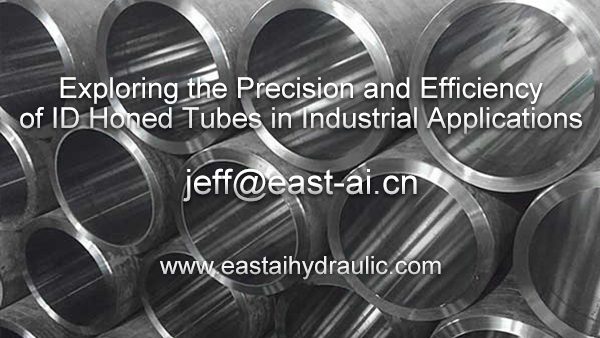Exploring the Precision and Efficiency of ID Honed Tubes in Industrial Applications
ID Honed Tube Applications and Advantages
ID honed tubes are precision-engineered components crucial for a wide range of industrial applications, especially in hydraulic and pneumatic systems. With their accurately dimensioned inner diameters and smooth finishes, they play a vital role in optimizing mechanical processes.
Specific Uses of ID Honed Tube
ID honed tubes are integral to hydraulic systems, providing the resilience needed to handle high pressures and minimizing leakage. These tubes are also essential in cylinders, pumps, and other devices that require precision tubing. Key applications include:
Hydraulic Cylinders
They ensure smooth operation and reduce friction within hydraulic systems, enhancing performance and reliability.
Pneumatic Equipment
ID honed tubes improve the efficiency and dependability of pneumatic systems, crucial for automating operations.
Engineering Machinery
From construction to agricultural equipment, these tubes are foundational in various types of heavy-duty machinery.
Advantages of ID Honed Tube
Using ID honed tubes offers significant benefits:
Increased System Efficiency
The smooth interior of these tubes lowers fluid resistance, significantly boosting system efficiency.
Leakage Reduction
Their precise tolerances and superior materials help minimize the likelihood of leaks, maintaining system integrity.
Extended Equipment Life
Less friction and wear extend the lifespan of machinery, reducing maintenance costs and downtime.
Manufacturing Process and Technology
Manufacturing Process
The production of ID honed tubes involves several critical steps:.
Material Selection: Durable, high-strength steel or alloys are selected to withstand the tubes’ operational demands.
Precision Honing: Specialized machines refine the interior surfaces to achieve the necessary smoothness and dimensional accuracy.
Heat Treatment: This step enhances the mechanical properties of the tubes, ensuring they meet performance standards.
Impact of Manufacturing Techniques on Performance
The chosen manufacturing techniques significantly influence the performance of ID honed tubes. Precise honing and stringent quality controls are crucial for achieving high wear resistance and maintaining pressure tolerance.
Comparison with Other Types of Tubing
Differences with Seamless Tubes
While both ID honed tubes and seamless tubes are prevalent in industry, they serve different purposes:
Inner Diameter Precision: ID honed tubes provide more precise dimensions, making them ideal for high-precision applications.
Surface Finish: The smoother surface of honed tubes reduces fluid flow friction compared to seamless pipes.
Standards for Choosing Appropriate Tubing
Selecting the right tubing requires careful consideration of the application’s specific needs. For environments that demand high precision and withstand high pressures, ID honed tubes offer optimal performance.
Technical Specifications and Standards
Technical Specifications
Key specifications of ID honed tubes include:
Inner Diameter Tolerances: Maintained at micrometer precision to ensure a perfect fit.
Surface Finish: A polished finish reduces friction and wear, enhancing longevity.
Industry Standards and Certification Requirements
Compliance with industry standards and certifications is critical in the manufacture and use of ID honed tubes, including adherence to ISO standards and other quality management systems.
Market Trends and Innovation
Latest Market Trends
The market for ID honed tubes is dynamically evolving, driven by technological advancements and new material applications.
Innovations in Materials and Technology
For example, the integration of composite materials and the latest advancements in tube honing machines have markedly improved both the performance and efficiency of ID honed tubes, setting new industry benchmarks.
The article serves as a comprehensive guide to understanding ID honed tubes, their importance in industrial applications, and the technicalities involved in their manufacturing and use, alongside discussing industry trends that are shaping their future development.


